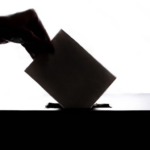Find out what microaggressions are, what they can look like, and how to remove them from the workplace.
The importance of creating an inclusive environment in the workplace has never been greater, and young employees in particular prize diversity and inclusion highly. Did you know that 31% of those aged 16-24 prefer to work for employers that actively prioritise diversity in their workforces?
However, even in organisations that uphold diversity and inclusion as core values, subtle and unintentional statements, actions, or incidents can inadvertently undermine these values and cause employees to feel excluded, othered, or insulted.
Recognising and addressing these incidents–known as microaggression–is crucial for fostering a truly inclusive workplace. In this guide, you will learn what microaggressions are, why they matter, how to spot them, and how to eliminate them from your workplace.
What is a microaggression?
A microaggression is a subtle, often unintentional, discriminatory comment or behaviour directed at members of marginalised groups. Rooted in stereotypes, misconceptions and offensive beliefs, these behaviours may seem harmless (or even complimentary) to the perpetrator, but they can have a significant and painful negative impact on the recipient.
One example of a microaggression might be telling a person of colour, “You speak English really well.” Though intended as a compliment, this comment makes assumptions about the individual’s background and implies that people of that ethnicity should not be fluent in English.
Microaggressions can be verbal, non-verbal, or even visual.
Effects of microaggressions in the workplace
Microaggressions, by their very nature, might seem minor. However, their cumulative effect can be profound.
It’s important to remember that a person who is part of a marginalised group may face numerous microaggressions every day, week, month, and year of their lives. This constant exposure to microaggressions can have devastating mental health repercussions, leading to increased stress, anxiety, and even physical health problems.
Microaggressions are also symptoms of larger societal and systemic problems. When a person commits a microaggression in the workplace, no matter how well-intentioned, they are marginalising the recipient and reinforcing harmful socio-cultural biases. Over time, the cumulative effect of microaggressions at work can reinforce harmful systems of power and inequality.
Common microaggressions in the workplace
Identifying microaggressions is the first step toward addressing and eliminating them in your organisation. Here’s our checklist of twelve of the most common types of microaggressions, with examples.
Please be aware that this list is not necessarily comprehensive–listen to marginalised people and, if they feel that you or someone in your team has committed a microaggression, believe them.
Comments on speech, accent, or language skills
This includes phrases like “You speak so eloquently” or “You don’t have an accent” directed towards non-native speakers of English or those from non-white backgrounds.
Tokenism
Tokenism includes making statements like “You’re not like other [characteristic] people” or using an individual to represent an entire group (e.g. “What do women think about this?”)
Dismissal of experiences
This involves the downplaying of someone’s experiences related to their gender, race, or background, particularly negative experiences. Phrases such as “I’m sure he didn’t mean it like that” or “You’re overreacting” are likely to fall into this category.
Assumptions based on stereotypes
This might include assumptions about a person’s role, abilities, or interests based on their race, gender, background, or other characteristics. One common example is assuming that women are in support or administrative roles when they may in fact be in technical or leadership roles.
Exoticisation
Exoticisation includes things like asking individuals from different ethnic backgrounds “Where are you really from?”, appropriating and romanticising cultural items or dress without proper context, or even calling people “exotic.”
Invisibility
This is when people from marginalised groups are repeatedly overlooked, ignored, or spoken over during meetings or discussions.
Mispronouncing, shortening, or westernising names
Continuously mispronouncing someone’s name, or making no effort to get it right, signals that their identity is not valued. Alison Green at Ask a Manager answered a reader question about this type of microaggression, in which employees had given an Indian employee (“Parvati”) a westernised nickname (“Polly”) without her consent.
Comments on appearanc
This includes making unsolicited remarks about someone’s appearance as it relates to a marginalised characteristic. Examples might be commenting on cultural or religious attire without proper context, telling someone that they “don’t look disabled,” or telling a transgender person that they “pass” as cisgender.
Assumptions about personal life
This might include making assumptions about someone’s family setup, marital status, or sexual orientation based on stereotypes. One example might be asking someone a question like, “How can you be both gay and Muslim?”
Avoidance
Avoidance is simply avoiding interactions or not wanting to be alone with a colleague based on their race, gender, background, or other characteristics.
‘Splaining
The most widely known form of this phenomenon is “mansplaining” (when a man unnecessarily explains something to a woman in a condescending manner, assuming she does not know about it) but it applies to any situation in which a more privileged person explains something to a more marginalised person due to an erroneously assumed lack of knowledge.
Patronising language
This involves using child-like language or a condescending tone when speaking to individuals from marginalised groups. This type of microaggression is particularly used against disabled and neurodivergent people.
Addressing microaggressions in the workplace
Identifying microaggressions is only the beginning. Organisations need to take proactive steps to address and reduce them. Here are a few strategies you can use to start tackling microaggressions in your organisation.
Training and workshops
Your regular training programme should include equality, diversity, and inclusion training. These sessions should educate employees about the various types of microaggressions, their impact, and ways to avoid them.
Open communication channels
Encourage employees to voice their concerns if they’ve experienced or witnessed microaggressions. There should be a mechanism to do this anonymously, as some people may not feel safe speaking up publicly or putting their name to a complaint.
Speaking up
The burden of speaking up against microaggressions should not fall exclusively on marginalised people. If you witness a microaggression directed at a colleague, speak up if you can, either in the moment or later.
This can be as simple as saying something like, “I don’t think Jane has finished speaking” when someone is being spoken over, or pulling a colleague aside and saying “I’m sure this wasn’t your intention, but asking someone where they’re ‘really from’ can be offensive, please don’t do that.”
This is particularly important if you are in a position of power such as management or senior leadership.
Support systems
Employee networks for those in marginalised groups can be a fantastic source of support.
As an employer, you can also provide access to counselling services (through private medical insurance or an Employee Assistance Programme, for example.) This allows employees who have experienced microaggressions to discuss their experiences and decide how to handle them in a safe environment.
Accountability
Implement clear policies against microaggressions in your workplace, ensuring that there are consequences for those who continuously perpetuate them (particularly if they continue after they have been told to stop.)










